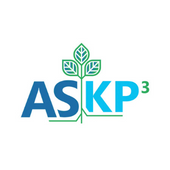Spravato for Treatment-Resistant Depression
Esketamine/Ketamine TRD Treatment in Chestnut Hill
Spravato for treatment-resistant depression (TRD) can provide relief for those who continue to struggle with symptoms, even after trying traditional therapies and antidepressants. Treatment-resistant depression is not just difficult to deal with — it can also be difficult to treat. With the help of newer treatment options like Spravato and TMS (transcranial magnetic stimulation), many people are finding relief. This not only helps them to live happier, healthier lives — it also greatly reduces the risk of death by suicide.
At Wave Treatment Centers in Chestnut Hill, PA, our caring staff is here to answer your questions about TRD and Spravato. As part of a comprehensive treatment plan for your treatment-resistant depression, Spravato may be the answer you've been searching for.
"I have been involved with ketamine treatments since 2009 when I was trained by a pioneer in ketamine use for CRPS, and I have been utilizing Spravato since its initial FDA-approval for major depression in 2019."
Dr. Jonathan Beatty, Founder
Start your healing journey
We will get back to you as soon as possible.
Please try again later.
SPRAVATO (Esketamine/Ketamine) FAQ
Frequently Asked Questions
-
What is the difference between Spravato and ketamine?
Ketamine is in a pharmacologic class known as a “dissociative anaesthetic.” It has been FDA
approved since 1970 for other uses but more recently has been shown to be effective for treating depression.
Spravato is the brand name for esketamine which is one part of the whole molecule racemic ketamine. There is good research demonstrating antidepression benefits from both compounds and we offer both options at Wave Treatment Centers. We will evaluate your symptoms to determine the best course of treatment.
-
What is Spravato / ketamine?
Unlike traditional antidepressants which work on the monoamines (dopamine, norepinephrine and serotonin), ketamine works on the N-methyl-D-aspartate or NMDA receptor which influences the neurotransmitter glutamate. Glutamate is the predominant excitatory neurotransmitter in the brain learning, memory and neuroplasticity.
Ketamine and Spravato can produce rapid benefits, sometimes in as few as 1-2 treatments. This medication can induce a dream-like state during which patients are often able to observe their symptoms from a new perspective — which helps them to deal with them.
-
How is Spravato taken?
Spravato is not taken as a daily pill like most other antidepressant treatment methods. Instead, Spravato treatment is administered as a nasal spray. It must be prescribed and dosed at an approved treatment center such as Wave Treatment Centers under the supervision of a medical provider.
Patients give themselves the nasal spray and are monitored by a medical professional for about 2 hours after dosing. The usual dosing protocol for the first month is twice a week. For subsequent months, it is most often only dosed once every one to two weeks before moving treatments to every 3-4 weeks.
Ketamine can follow a similar regimen or may follow alternate protocols or routes of administration.
-
What should I expect during a ketamine or Spravato treatment?
Because these medications can produce depersonalization, or the perception of being outside of yourself (dissociation), some patients describe the experience like a “waking dream.” Your vital signs will be monitored during the experience by medical staff who check your blood pressure and assess your dose response. The peak effects of the medication are generally during the first 40-60 minutes, but you will remain in the office for at least 2 hours. You may remain until you feel you are ready to leave. You cannot drive after the treatment until the next day and we will confirm that you have prearranged transportation to bring you home.
-
What are the side effects of Spravato?
As with all medications, Spravato does carry some risk of side effects. Most of these side effects are temporary and typically go away within 24-48 hours. It is required, however, that you have someone else drive you to and from your treatments, as some of the side effects may make driving unsafe. The most common side effects experienced by Spravato users include:
- Sedation
- Euphoria, or a feeling of being “high”
- Headaches
- Dizziness
- Increased blood pressure
- Stomach ache, nausea, or diarrhea
For those struggling with the effects of treatment-resistant depression, the benefits often far outweigh the risks. Be sure to discuss this with your Spravato-approved physician before treatment.
-
How is Spravato different from other depression treatments?
When someone is experiencing symptoms of depression, they typically go through treatment options in steps until they find relief. Treatment planning may be augmented to build on initial treatments by adding medication or other modalities to further improve symptoms. Traditional depression treatment options typically include the following:
- Adjunctive Treatments – This is when a doctor prescribes additional medications to try and boost the effectiveness of your antidepressants. The most common are mood stabilizers, anti-anxiety medications, and atypicals (SGAs).
- Antidepressants – Our medical staff will carefully identify and evaluate your symptoms to prescribe from among 5 different classes of antidepressants.
- Second Generation Antipsychotics (SGA) – SGAs can be administered on their own or as an adjunctive antidepressant treatment. Their name is confusing as they are frequently prescribed for non-psychotic symptoms.
- Spravato (esketamine) – Spravato and ketamine are not usually first-line treatments for depression. There are some logistical considerations for this in-office treatment but the potential benefits make it an important option.
- Talk Therapy – The first step for many people with depression is therapy. With many different types available, it can be highly customizable to suit your needs. Therapy can be separate or combined with medication.
- Transcranial Magnetic Stimulation (TMS) – TMS involves using non-invasive magnetic pulses to stimulate areas of your brain that depression has altered or shut down. It's usually only used after more traditional depression treatments have failed. TMS does not require medication and patients are completely awake during the painless, outpatient treatment.
-
Does insurance cover Spravato?
While every insurance plan is different, many insurance companies offer coverage for Spravato.
If you are considering Spravato for treatment-resistant depression, our caring staff will help you determine what your options are for insurance or other payment plans.
Dr. Beatty is very caring and takes a realistic approach to recovery. Dr. Beatty has an extensive background, both in education and working with alcoholics and addicts. I highly recommend him!
Daniel G.

CHESTNUT HILL
6 E. Willow Grove Ave.
Philadelphia, PA 19147
215-242-0420
PHILADELPHIA
407 South 10th Street
Philadelphia, PA 19147
215-242-0420
OFFICE HOURS
- Mon - Fri
- -
- Sat - Sun
- Closed











